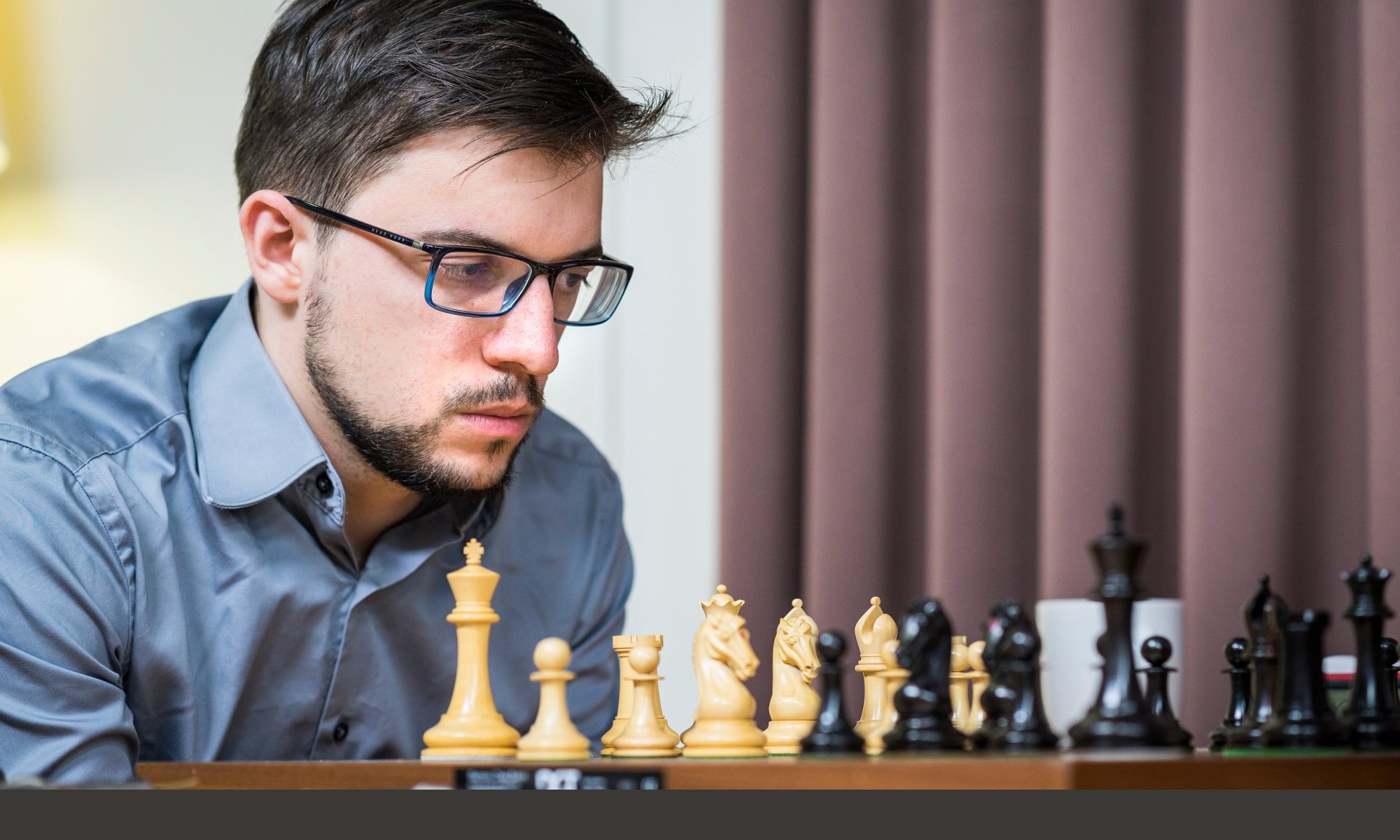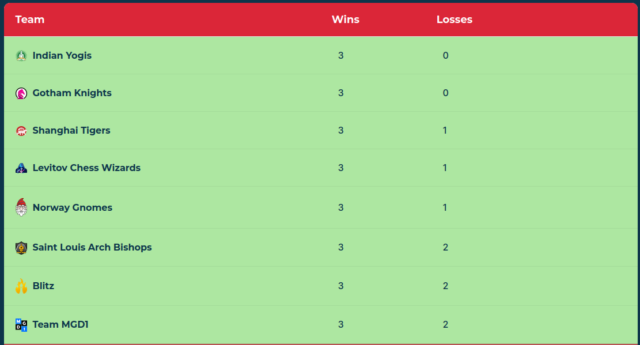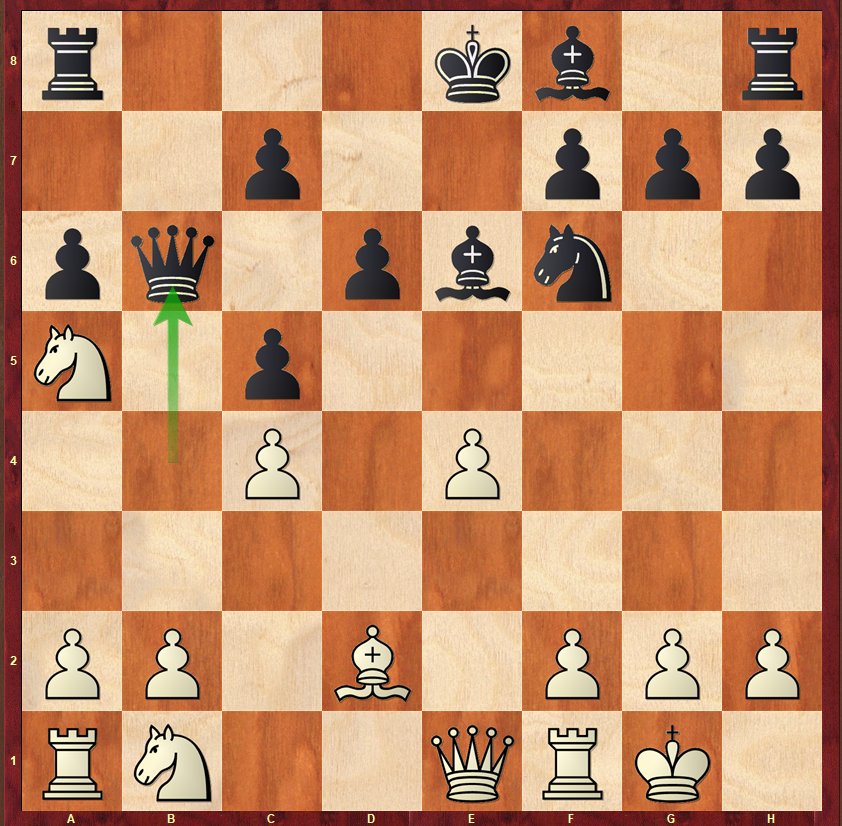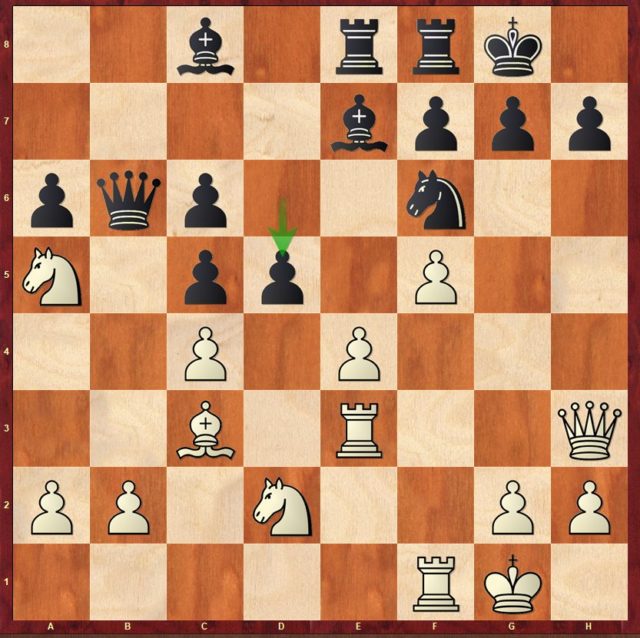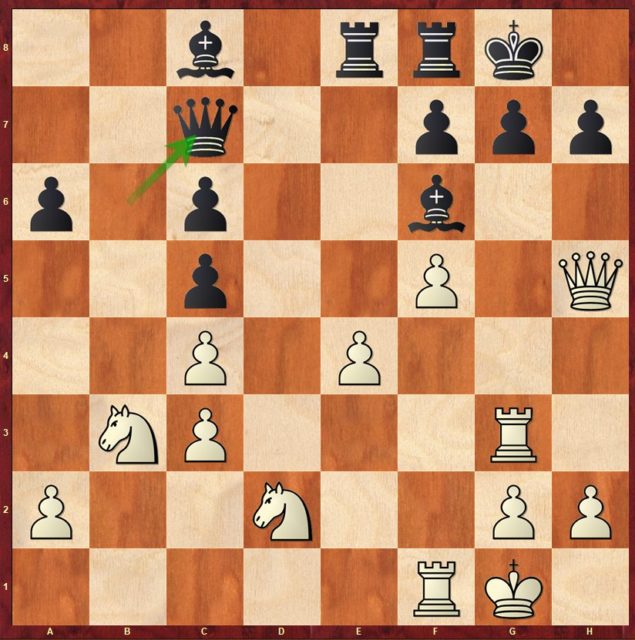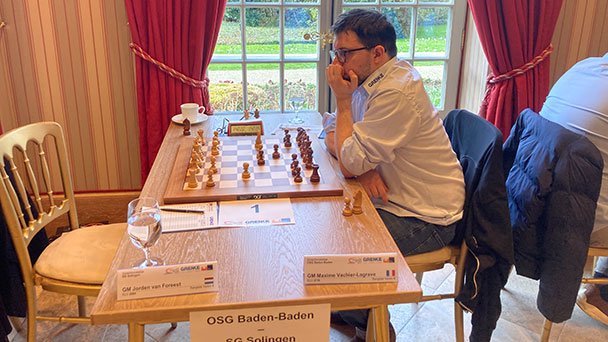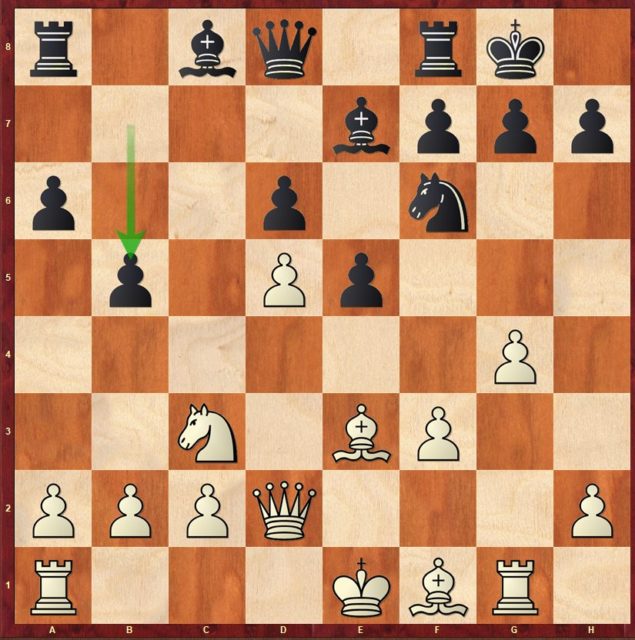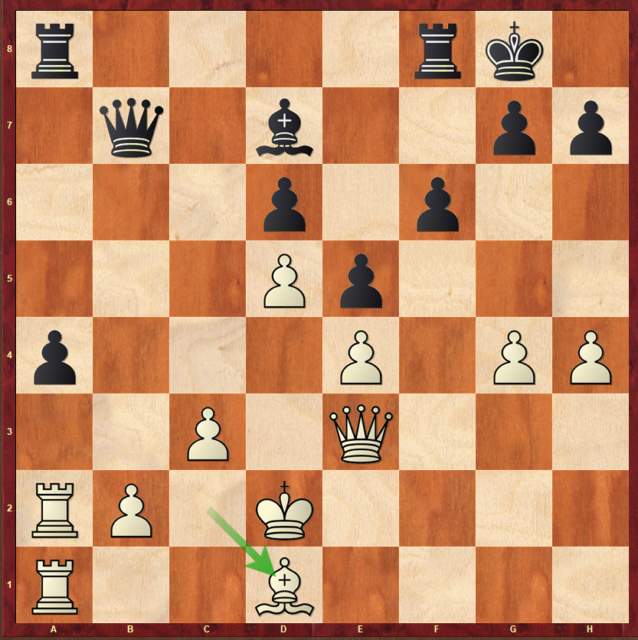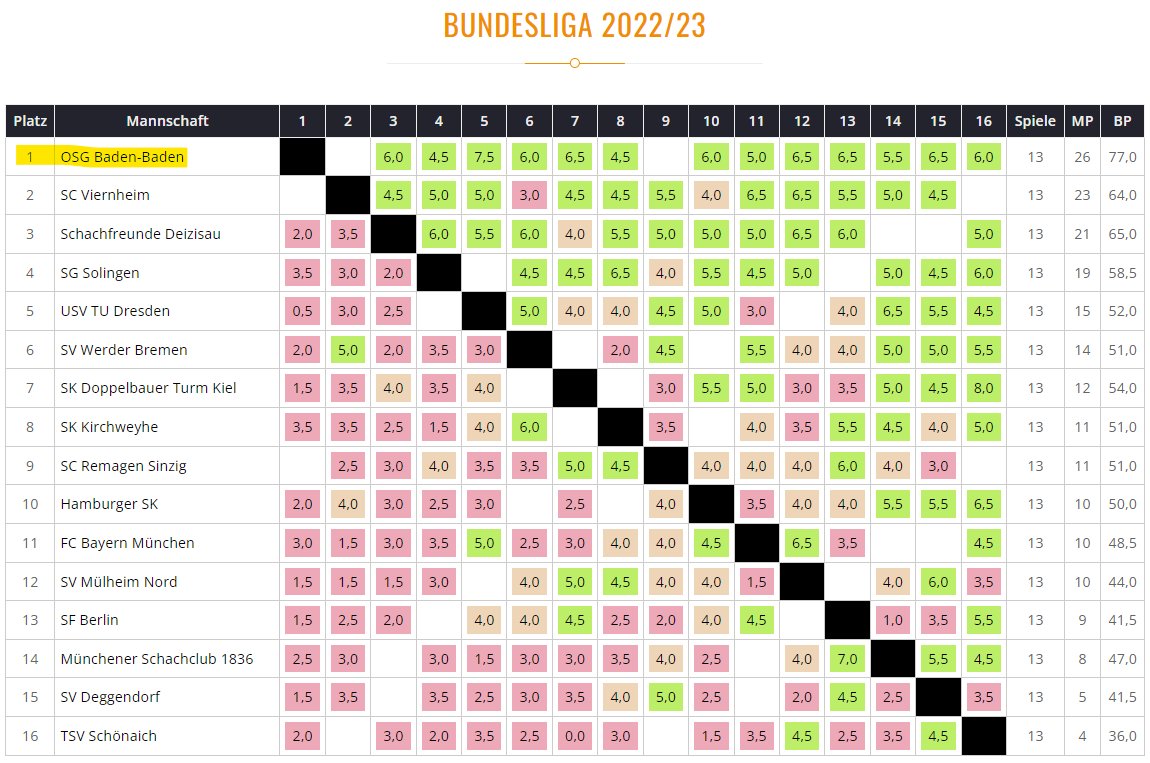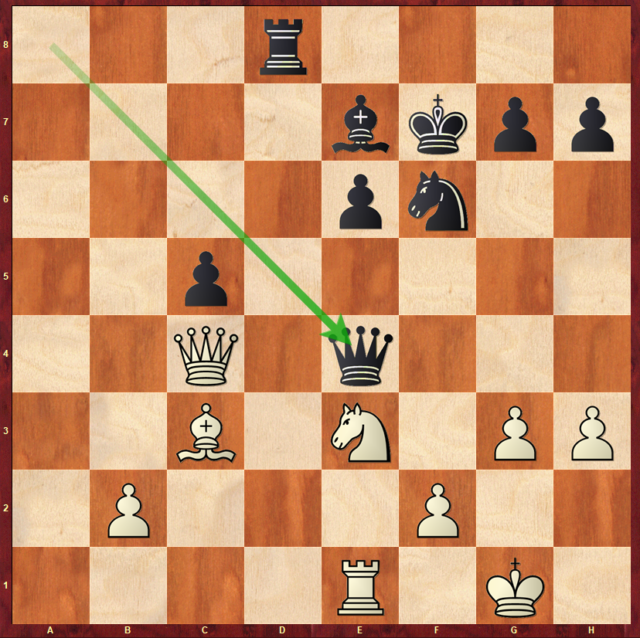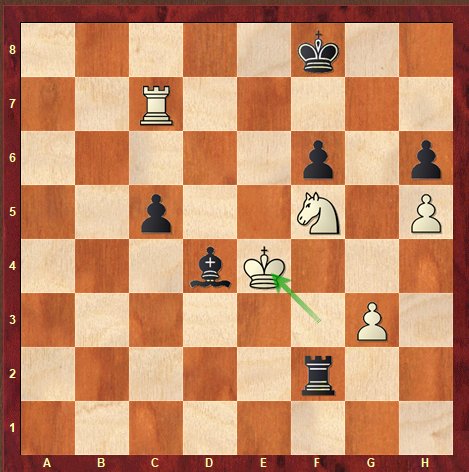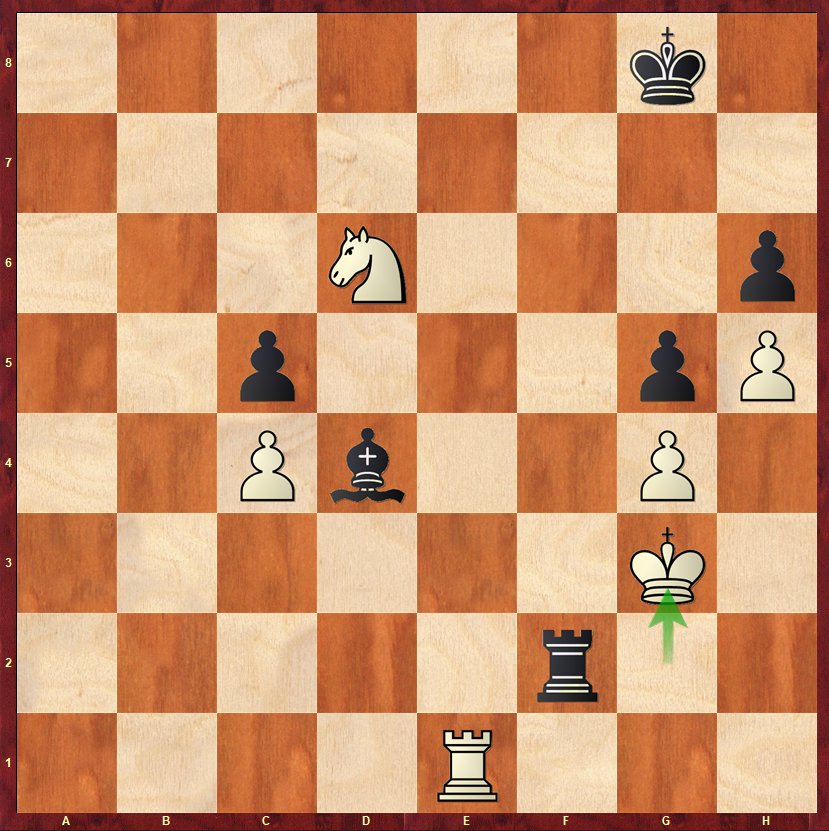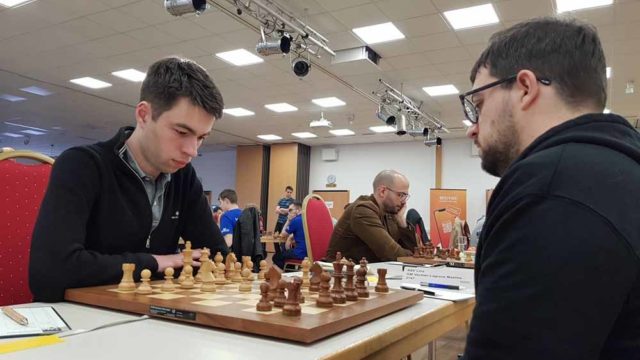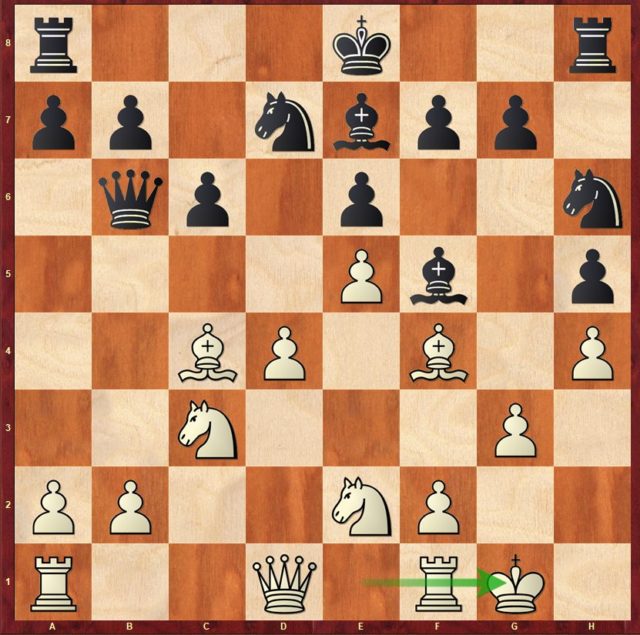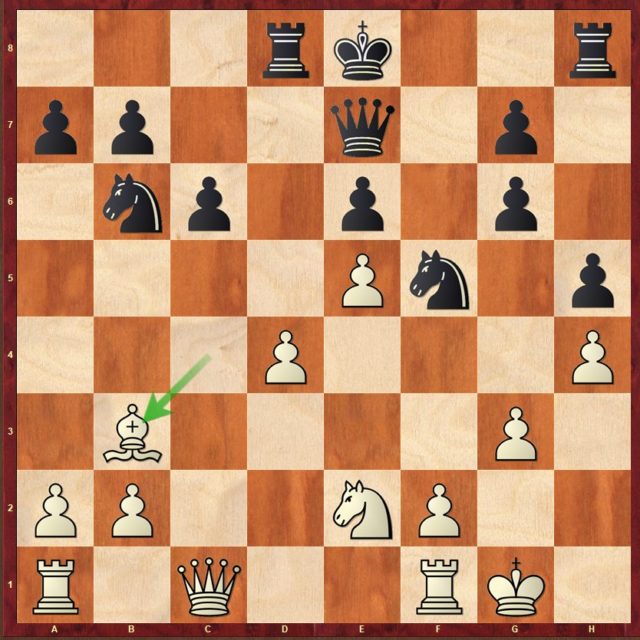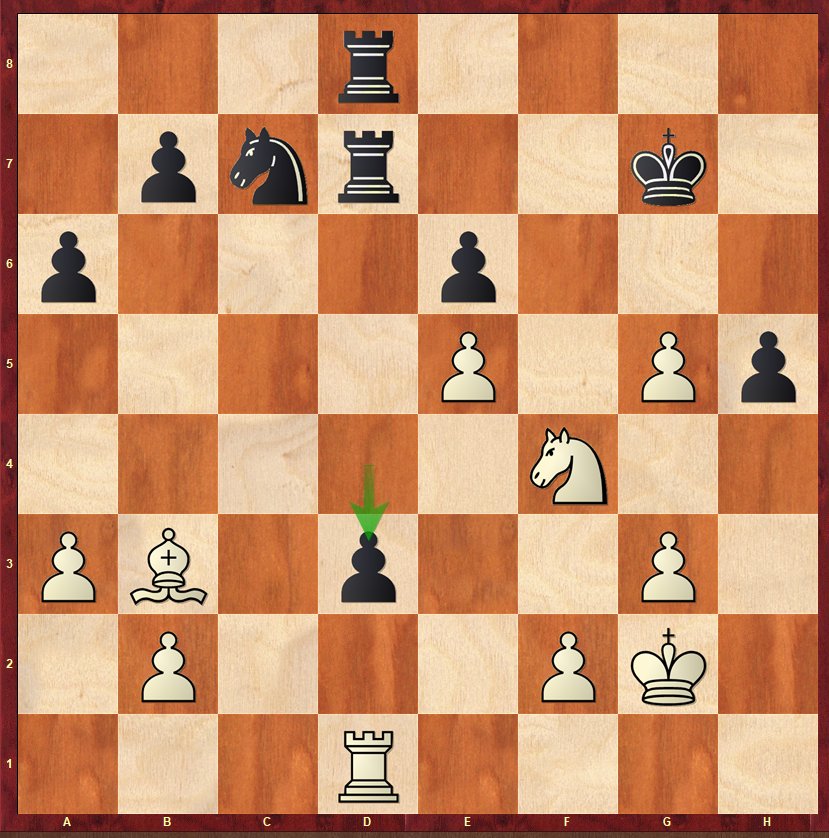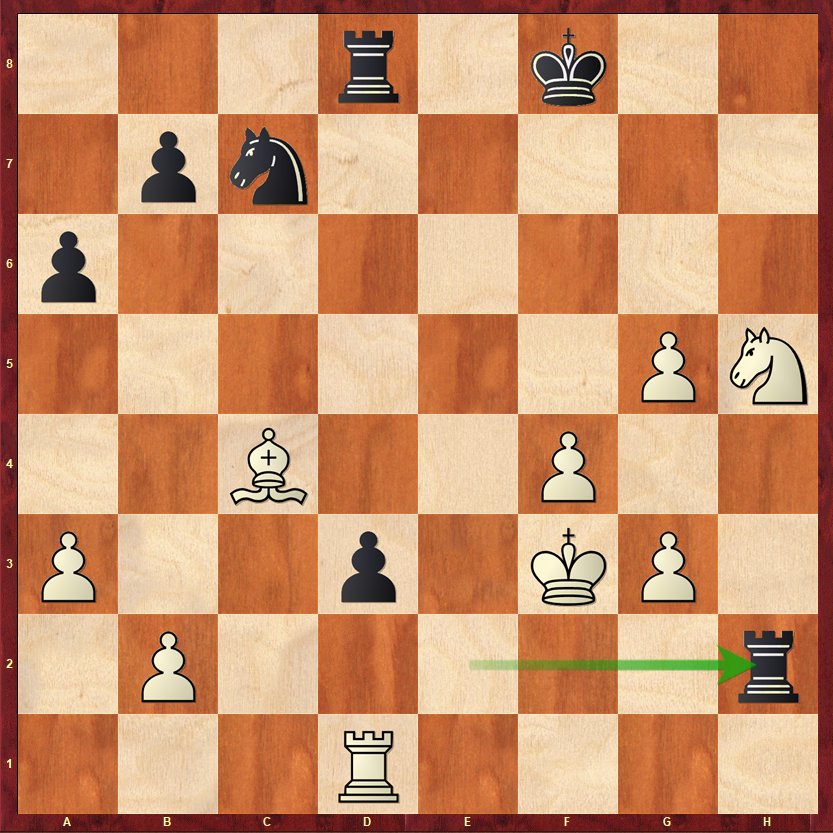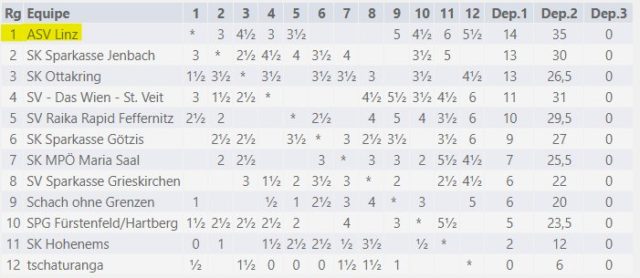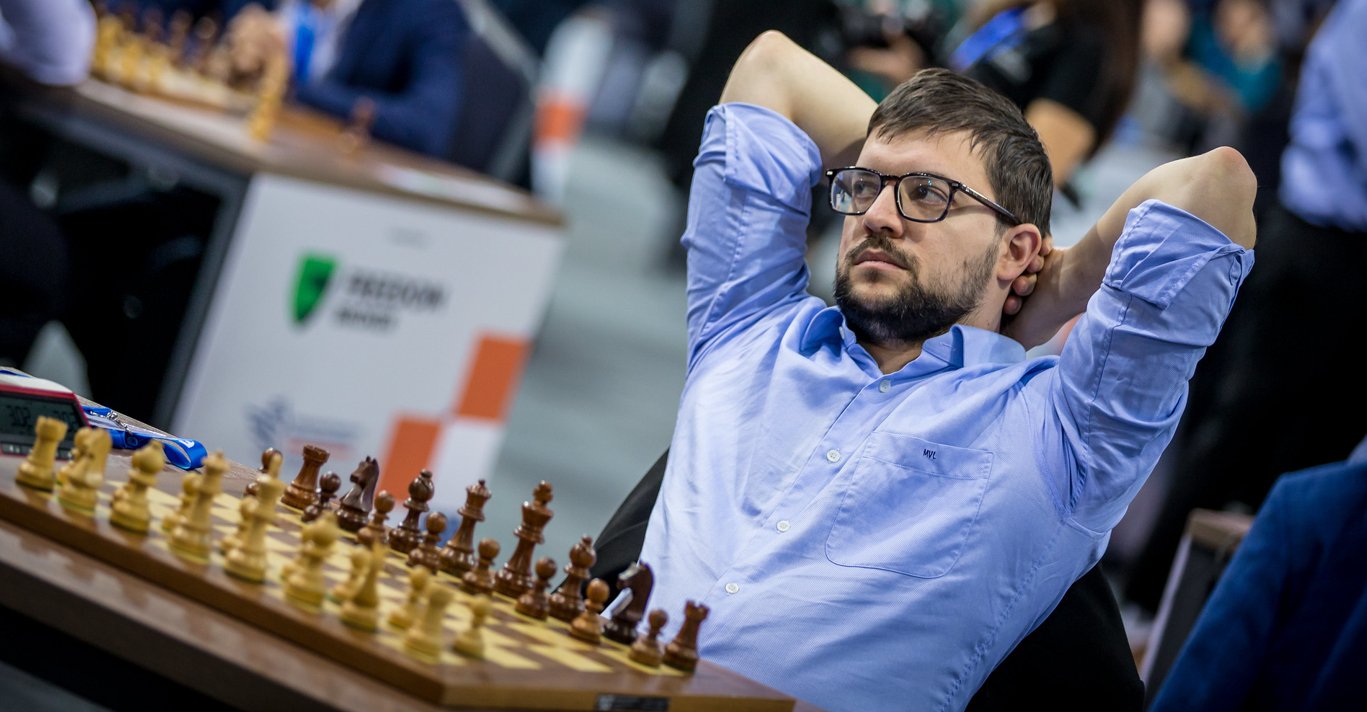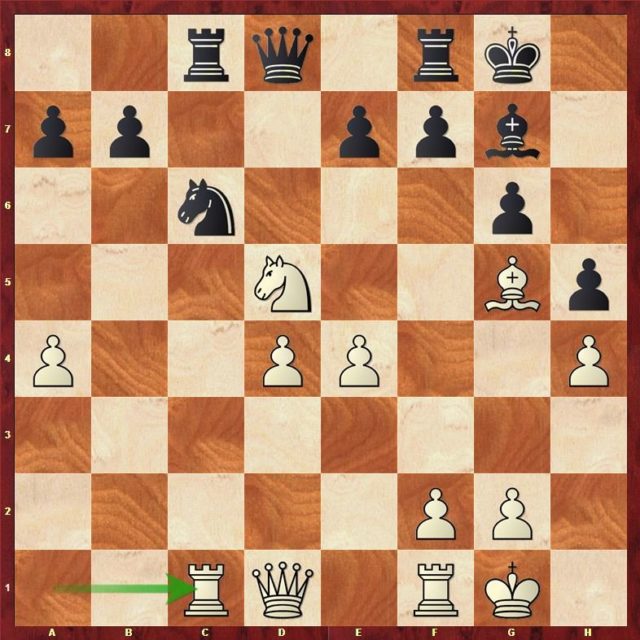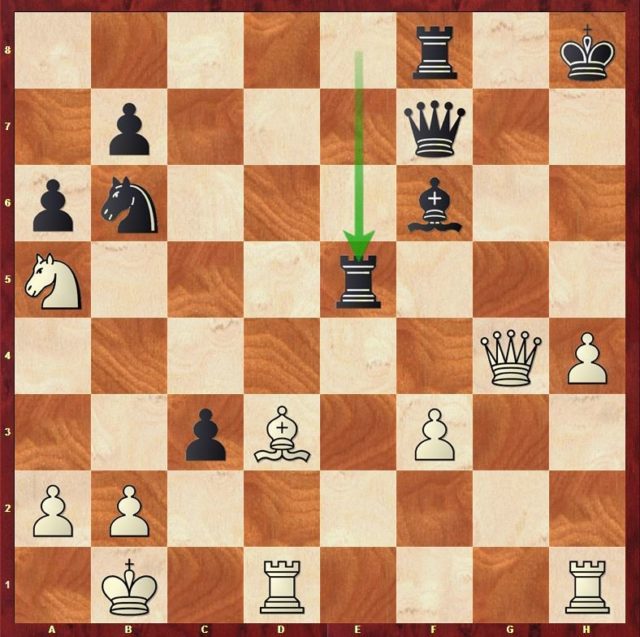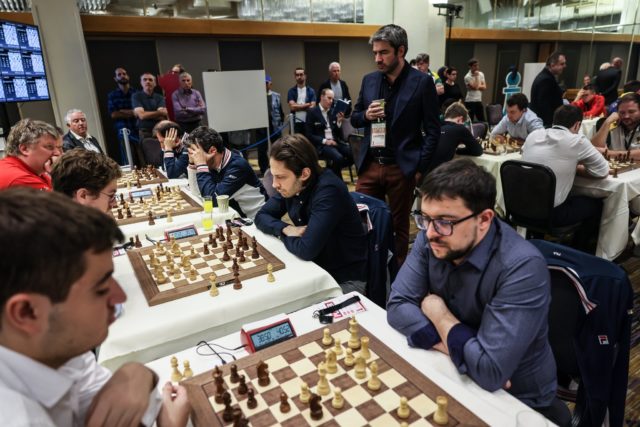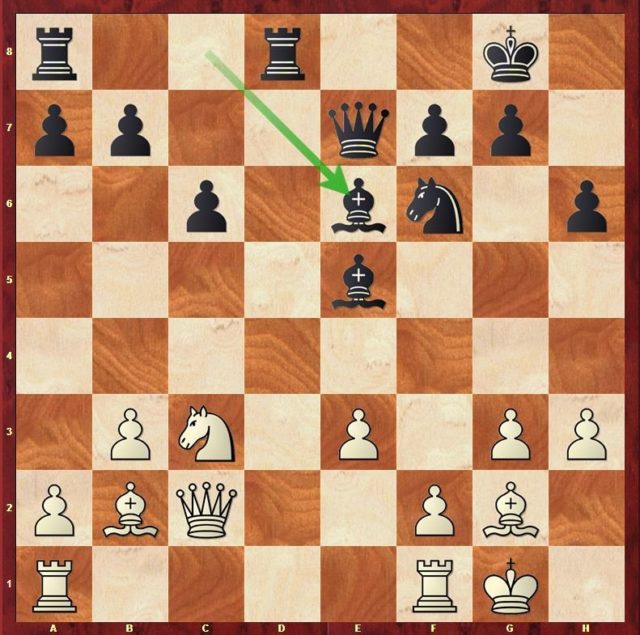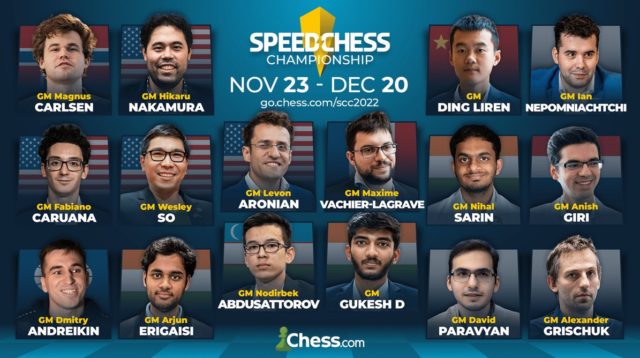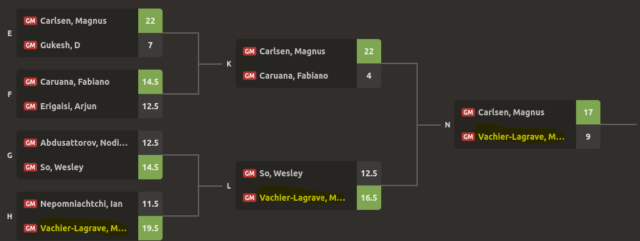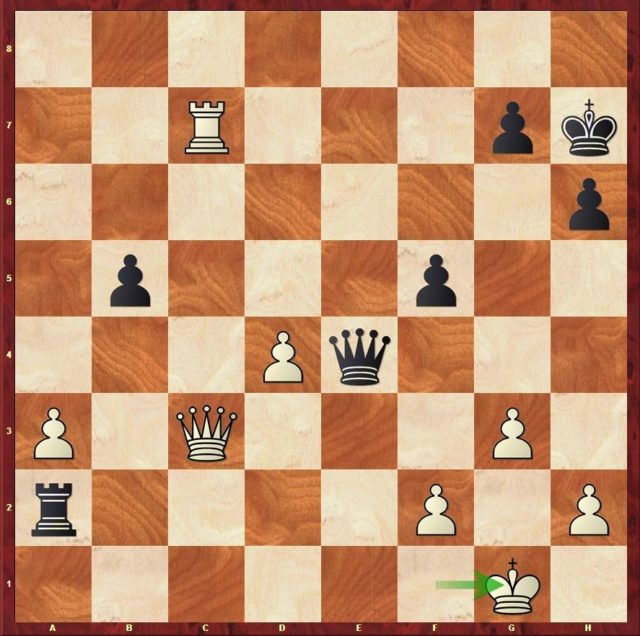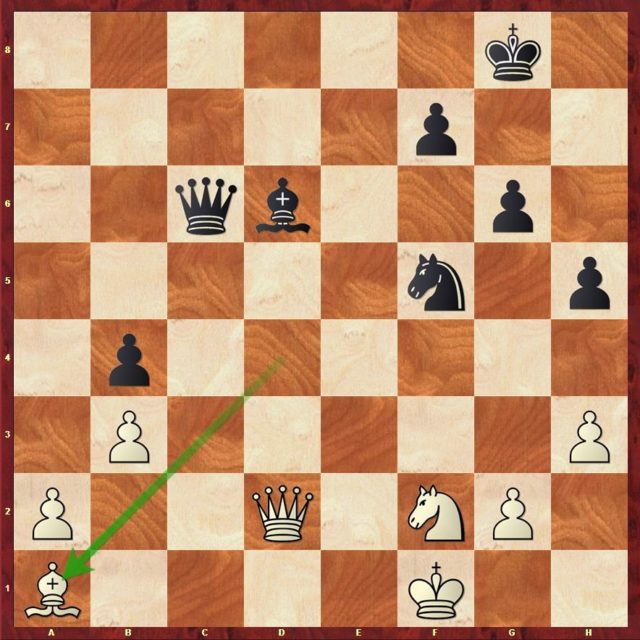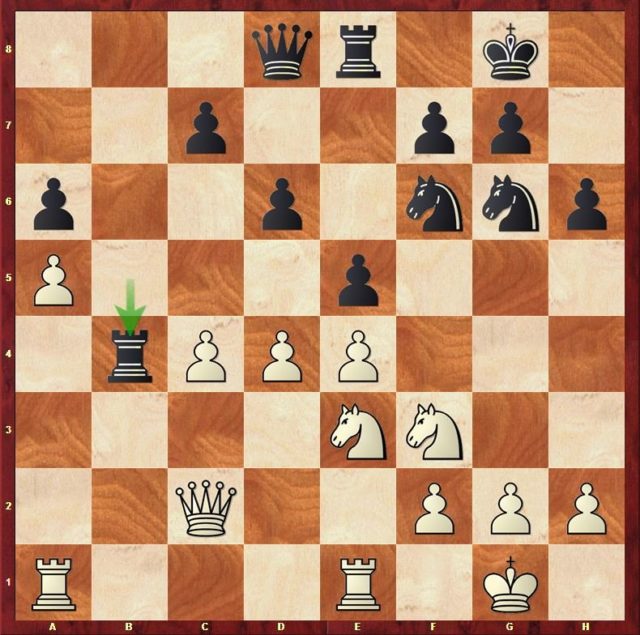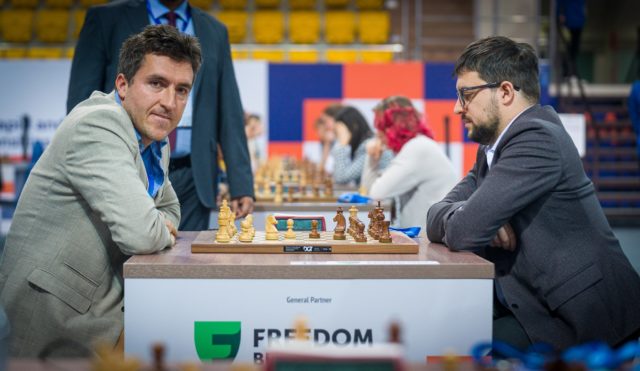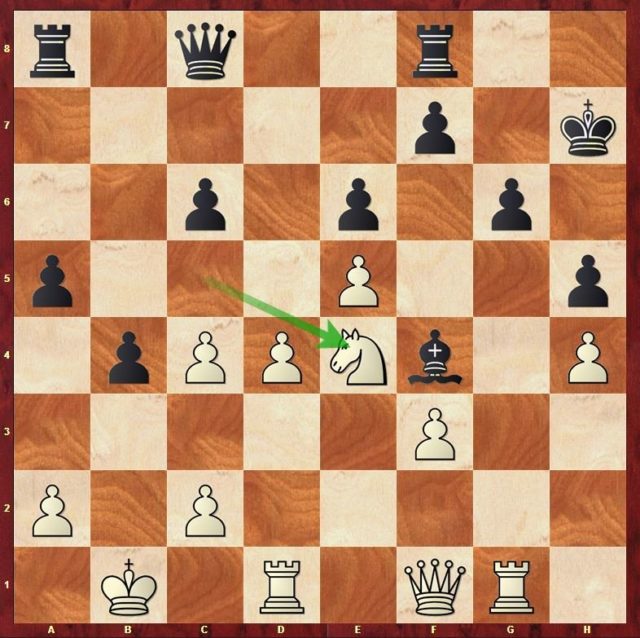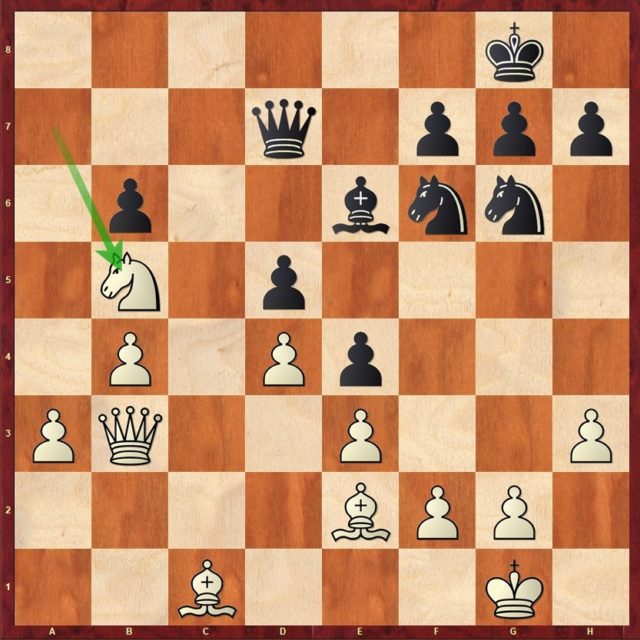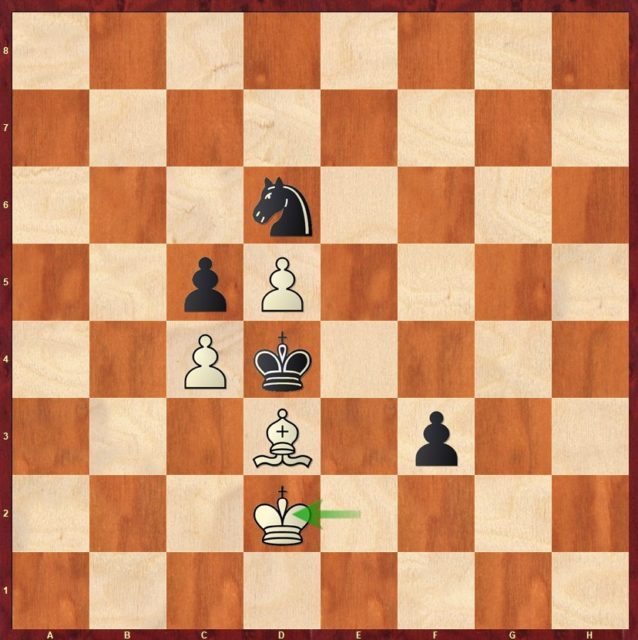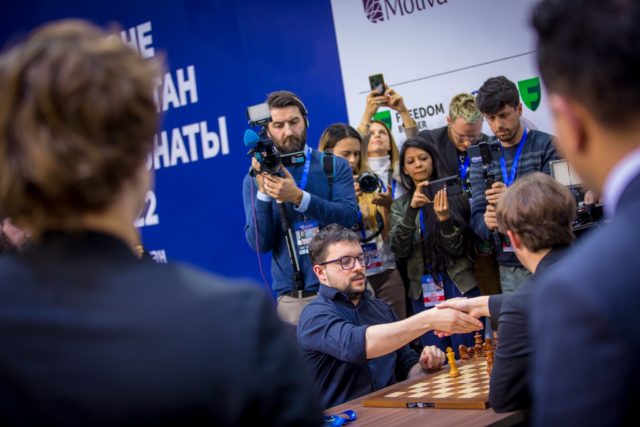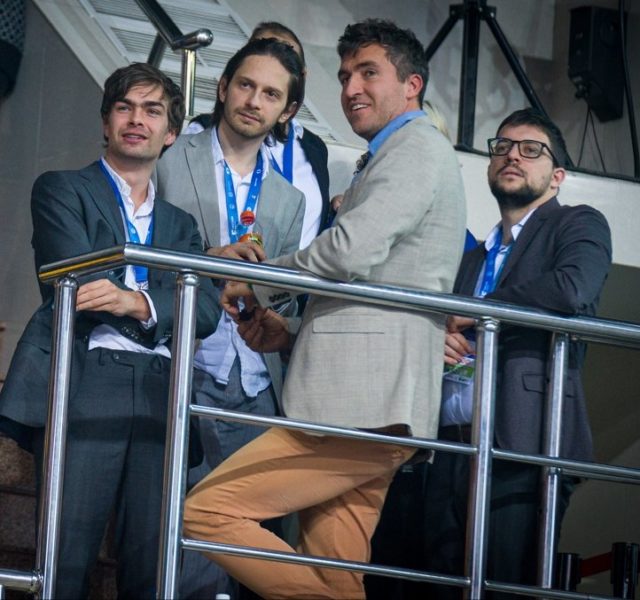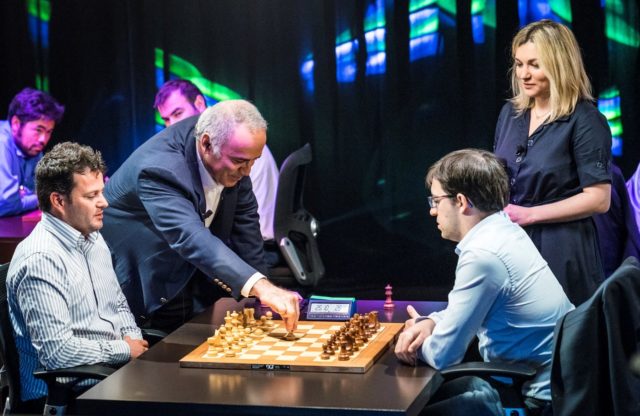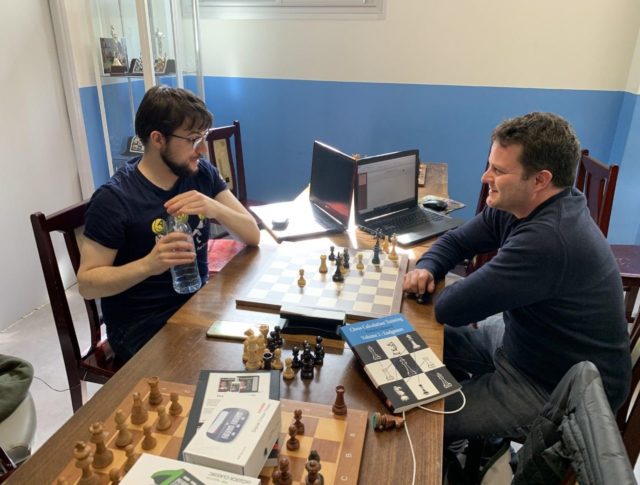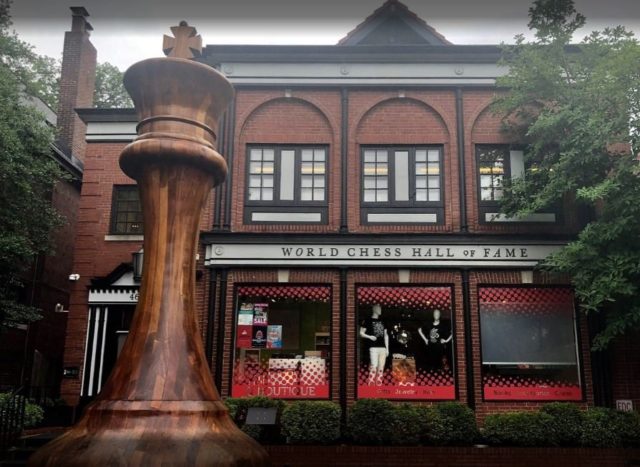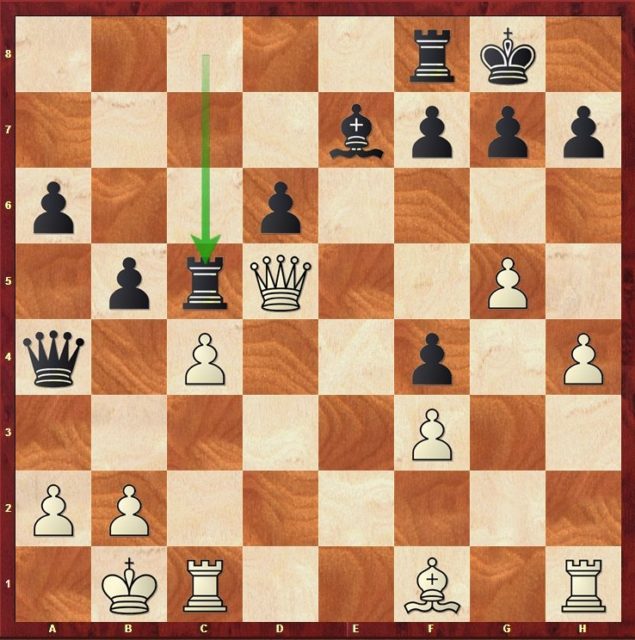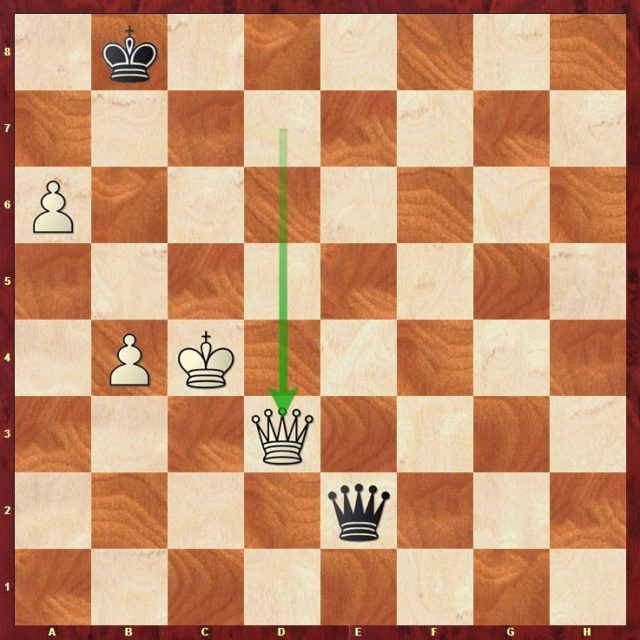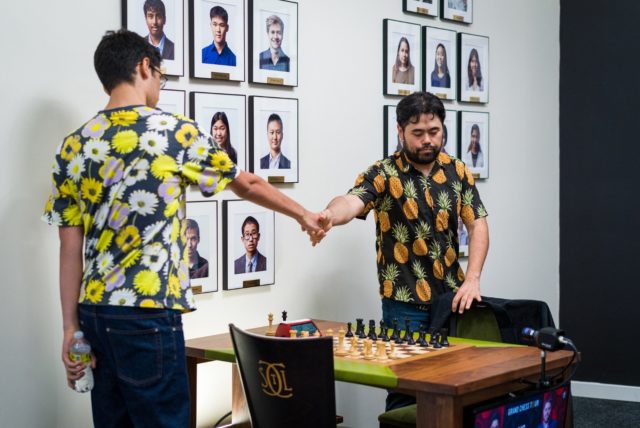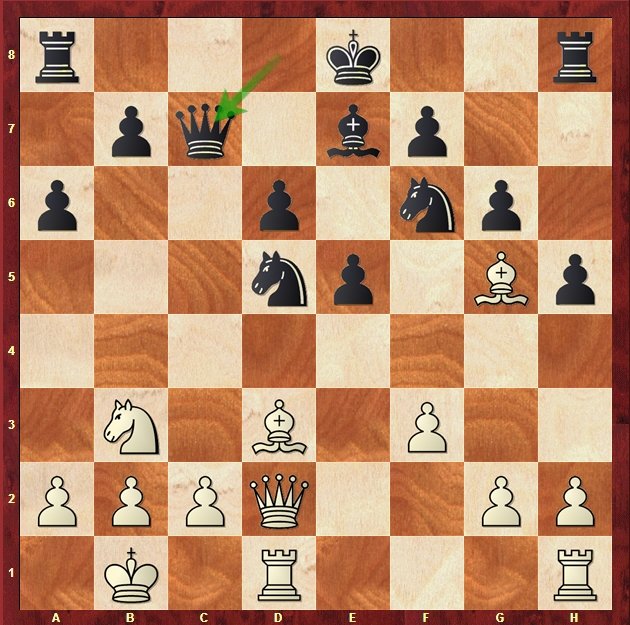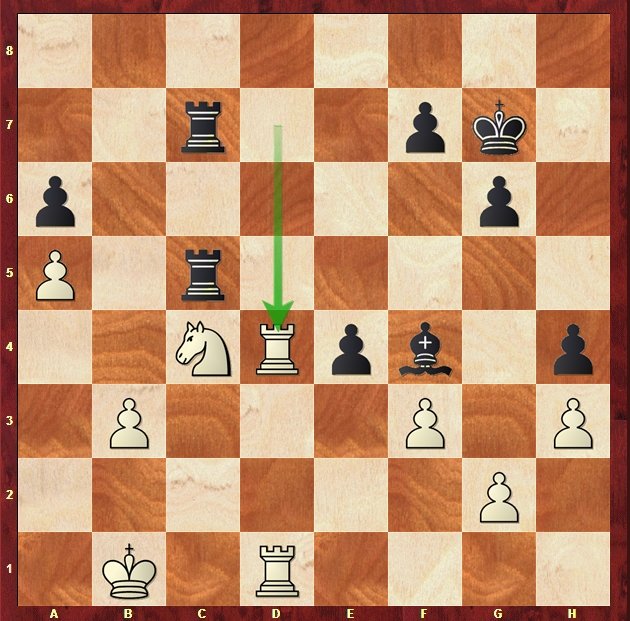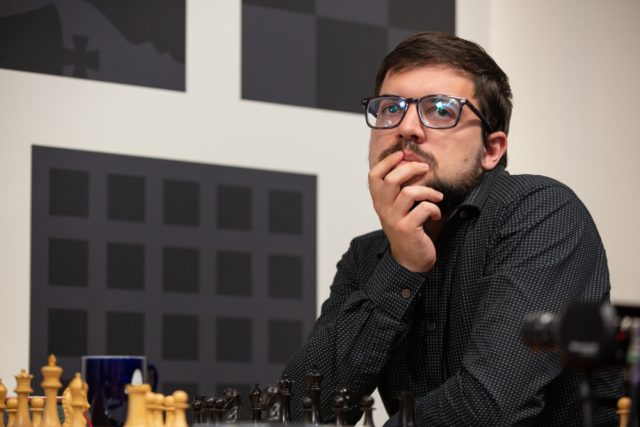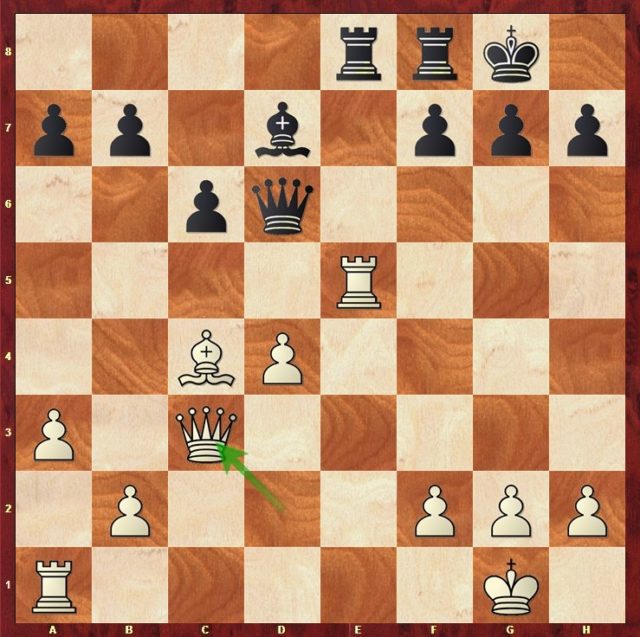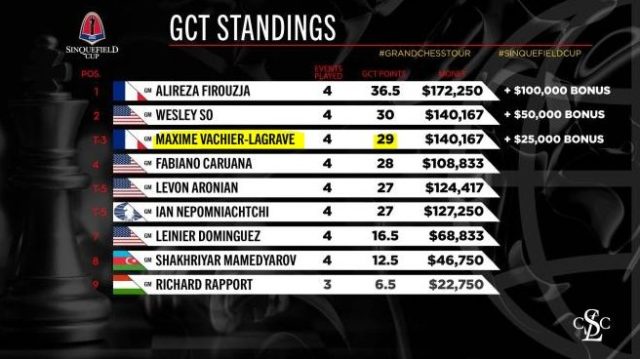Before the big events starting in May, I played the final rounds of the team championships in Austria and Germany, and the teams I played on both won the national title 😊.
Austrian Championship:
At the end of last year, I was contacted to be part of the Linz team, which had just moved up to the First Division. What I liked the most was that I kind of knew all the players of the team well, starting with Etienne [Bacrot], Jules [Moussard], Parham [Maghsoodloo], but also the two Russians, Andrei [Esipenko] and Kirill [Alekseenko], as well as the two older players, Arkadij [Naïditsch] and Csaba [Balogh]. The discussions between my manager and the head of the Linz team – who has been elected President of the Austrian Chess Federation in the meantime! – were very smooth and the deal was quickly closed.
So we were in the best conditions to play, and I was present for the three gatherings of a few days which were scheduled.
The level of the Austrian championship on Board 1 was higher than I thought. And on the whole, quite a few games were tense because on six boards, it can go quite fast. Even if sometimes the opponents were trailing us by an average 200 Elo points, it only takes a surprise in one game, and one or two draws elsewhere, and the match could easily get out of hand.
That’s what happened as we drew two matches. Fortunately, our number 1 rival of the season, the Jenbach team, lost a match afterwards, allowing us to win the title in our first year in the top League. Some may have reservations about the value of this title in Austria, but I’ll take it anyway 😊.
Huschenbeth (2599) – MVL : 1/2-1/2
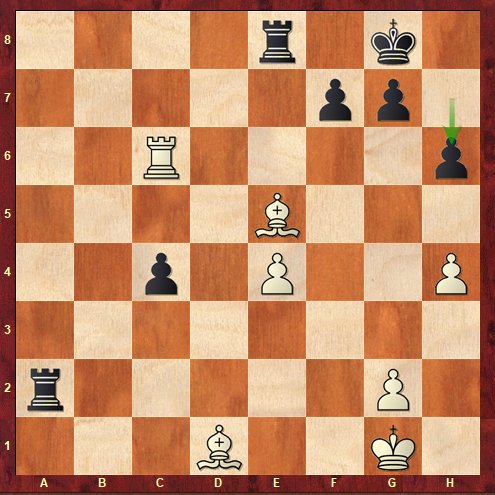
A funny anecdote in this game. After playing 41…h6, I offered a draw to my opponent, because I could see that he was going to return the pawn and for me it would have been equal afterwards.
My teammate sitting next to me, Parham Maghsoodloo, asked me after the game why I had declined the draw. In fact, he misheard my opponent’s refusal for a proposal!
The game continued 42.Bc3 Rxe4 43.Rc8+ Kh7 44.h5. Here I missed a very simple possibility to make a draw, and I am a bit ashamed: I could have played 44…Ra1! 45.Bxa1 Re1+ 46.Kf2 Rxd1 47.Bc3 Rd5 48.g4 Rg5!; I’ll play …f5 and the endgame with the g and h pawns against the h5 pawn is drawn. I didn’t see 44…Ra1; you don’t necessarily want to give away the Rook like that, so I didn’t think of it.
What I played did not compromise the draw, even though the sequence 44…Rf4 45.Re8 Raf2 46.Kh2 Ra2 was slightly esoteric 😊. I never played …f6 because if the Bishop lands on d5 I might get mated.
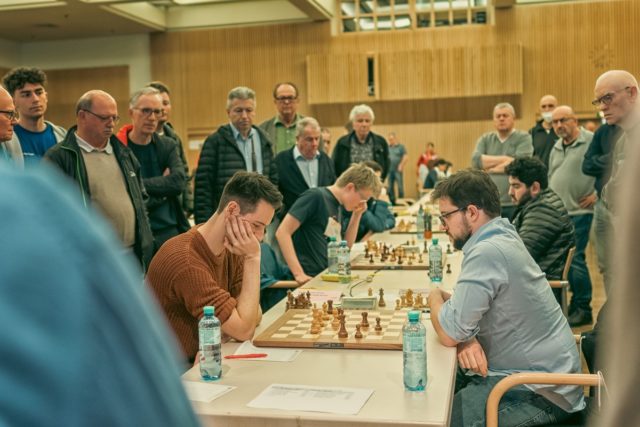
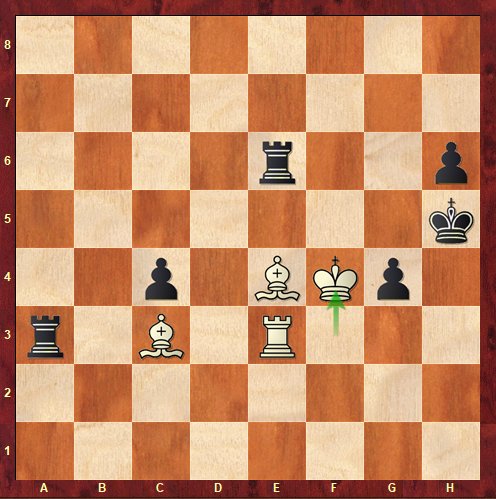
After a blunder by my opponent, we got this position and I didn’t realize how superior it was. That said, I didn’t really look for it because the draw my opponent offered me at that moment ensured us victory in the match. Seeing that my calculations weren’t very good (and that my King was still on h5 😊), I figured I’d better accept.
Anyway, I hadn’t considered the winning move 59…Re8! with the idea 60.Kf5 (white is almost in zugzwang!) 60…Rf8+ 61.Ke5 Kg5 and black’s King exits. I had looked at 59…Ra7 60.Kf5 (while 60.Bf5 draws immediately) 60…Rg6 (obviously I was starting to really miscalculate because I didn’t see that 60…Re8 61.Re1 Rf8+ 62.Bf6 Ra5+ was winning) 61.Re1 Rf7+ 62.Ke5 and I realized that I could get checkmated anytime because white is threatening Rh1 and Bd2. If I had seen a relatively clear win like the one after 59…Re8!, I would have played on; in an individual game as well, I probably would have continued.
MVL-Roseneck (2410) : 1-0
A system from the London that just happened to appear in the Ding-Nepo world championship game the next day, even though they didn’t play exactly the same line; the coincidence is funny.
.
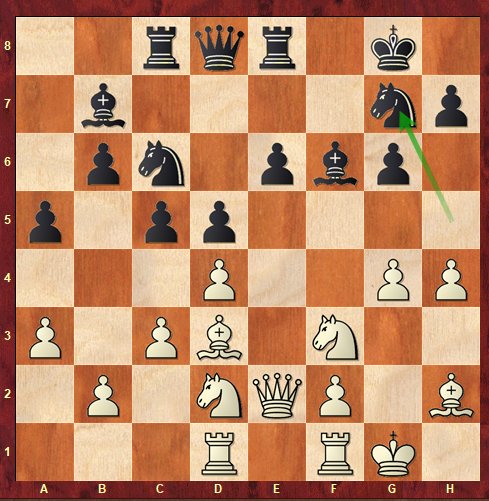
Here I made a mistake. My original plan was 18.g4?! Ng7 19.Qe3, which is actually catastrophic after 19…e5! 20.dxe5 Qd7. According to the computer I’m still better but it’s getting scary because you have to play 21.Bg3 Qxg4 22.Ne4 to keep the advantage, which seemed really weird. So I escaped from this mess with 19.g5, but I wasn’t very happy about the open lines in front of my King. After 19…Be7, however, I missed a very strong move: 20.h5! which I discovered in the analysis. The game continued with 20.Ne5?! cxd4 21.Nxc6 Bxc6 22.cxd4. I was a bit afraid of 22…e5, but I didn’t think my opponent would see it, which he didn’t indeed. Parham, always quick to intervene, asked me if I had seen this 22…e5. Yes! And I was going to play 23.dxe5 because if 23.Bxe5 Bxg5 24.hxg5 Qg5+ and it’s a draw. After 23.dxe5, I thought I would be a little better in a very compex position because the diagonals are open, and there is a blockade coming with the Knight on e6.
I played rather preciselyt the rest of the game, until I accepted a Queen’s exchange at move 35 with 35.Qe5?.
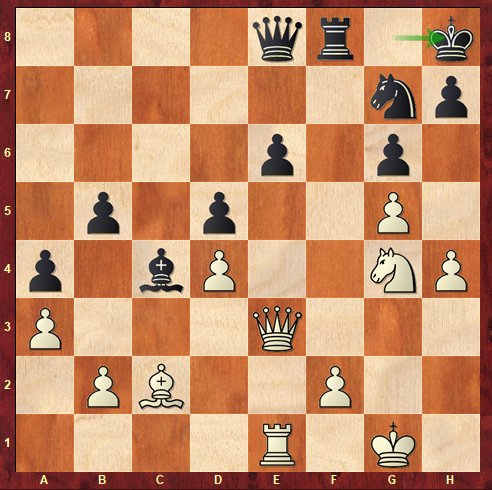
could have played 35.Nf6 right away, and after 35…Qe7 (there is no longer 35…Qb8 because of 36.Nd7) 36.Qe5 and I’m winning. In my mind, if I exchanged Queens it was easily won because of his Knight stuck on g7. Hence my move 34.Qe5?, and I expected 34…Qe7, whereupon I planned 35.Re3. But when my opponent played 34…Qb8! I realized that it wasn’t that simple. I’m still much better, but it has become a complicated ending.
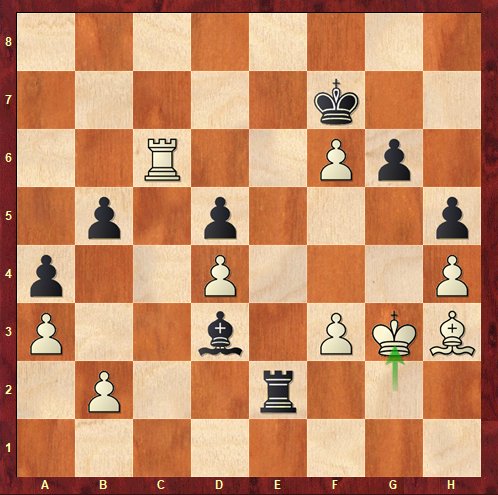
Here, he could play 45…Bf5!. I had calculated 46.Bxf5 gxf5 47.Kf4 Kg6 48.Rd6 Rxb2 49.Rxd5 Kxf6 (only move) 50.Rxf5+ Kg6 51.Rg5+ Kh6 52.Rc5. Here I did not know how
I was going to win, or even if I was going to win it at all. However, I thought I had a good chance because black’s King is confined to h6 and my d-pawn can advance. In the end it turns out that it’s probably a draw after 52…Rb3! 53.Ke4 Rxa3 54.Rxb5 Ra1 55.Ra5 a3 56.Kf5 a2 57.f4 Rd1; black gets the d-pawn back and the Rook ending with f- and h-pawns against an h-pawn is a draw.
I clearly would have suffered to win this endgame because everything can be simplified. But black also had a lot of opportunities to make mistakes.
But it all ended well because he didn’t play 45…Ff5 and preferred 45…Rxb2? 46.Kf4! and my King was able to infiltrate to b5, and then the endgame was definitely winning.
German Championship:
Even though I didn’t play the first few games, my team from Baden-Baden won everything. But Virnheim was also winning all its matches, and sometimes by quite large margins. So we thought that the last weekend’s match against them would be decisive. But they broke down, having probably not had the possibility to send their best line up in important matches on the 2 previous weekends, and had to drop points on the way. Before the last weekend we were first. In the penultimate round, Virnheim’s team beat us convincingly with a somewhat harsh score of 3-0, congratulations to them! But this defeat did not prevent us from winning the title in the last round.
On a personal level, there were ups and downs in theses Leagues, though I ended up undefeated in both of them. Only wins with white and draws with black in Austria (+5, =4). In Germany it is not exactly the same, because I drew once with white and won once with black (+4, =5).
This is my fifth title with Baden-Baden. And it’s always nice to win titles with the clubs. It was also an opportunity for me to do some tests. The most important thing was not to get out of the habit of playing classical games before the upcoming events. I didn’t want to take a break of almost 8 months with 0 classical games in tournaments.
Ding-Nepo World Championship match:

It is difficult to conclude without saying a word about the world championship!
After my very last game in the Bundesliga, I was able to follow live the fourth tie-break game between Ding Liren and Nepo, which gave the world title to the Chinese. It kept us on our toes. I was surprised by the speed of the decisions taken by the two players in such a decisive game, but I think it was their nerves that were a bit loose. There were some critical positions very quickly. Nepo should have forced a draw at some point and didn’t. Ding managed to find nice moves, including the famous 46…Rg6! which allows the game to continue and will be remembered as the master move for the crown. In the end, the piece fell on the right side for Ding. But we can say that he really went for this title in that very last game with black.
Overall, the level was a bit low for my taste; there were some games that were given to the opponent on both sides, especially games 2 and 12.
Each player had their moments. We had also some really good games, with a pretty high level of calculation. I think at the end of the match they got a little caught up in the stakes, which is understandable because it was obviously a golden opportunity for both of them. They had a hard time finishing the match at their level; the nervous tension must have come into play, and the physical fatigue must have been felt as well.
It was a pretty exciting match with a lot of twists and turns. We had a lot of fun watching the games. It was very well attended, although we were a little worried that everyone would shun it because of Carlsen’s absence. That’s something to be glad of.
Perhaps the format should be changed, I agree with Magnus on this point. The current format is grueling for the players, it involves 6 months of intense preparation. But that’s just a personal opinion, worth what it’s worth 😊.
Ding is a very nice World Champion, coming from a country which had never had one. We will see now the development of chess in China, under the impulse of this title. Let’s also see how the two players will react, after this huge disappointment for one, and this triumph for the other.
I will have the opportunity to observe all this closely, as I will face both of them during the first tournament of the Grand Chess Tour 2023 in Bucharest, starting on May 6th!
Maxime’s games in austrian Bundesliga:
Maxime’s games in german Bundesliga :
I made a short visit to the French Youth Championships in Agen on April 25 and 26, at the invitation of the French Federation. A quick visit on Tuesday evening at the playing hall, mostly to see the people I knew. Of course, I had a few requests for photos as soon as I arrived, but it was the next day that everything accelerated, with some media obligations and then the arrival in playing hall to launch the rounds. First the fifth round of the older categories, in a very warm atmosphere, then the youngest ones, with the presentation of Marc Llari who won the world title in U8, and of Timothé Razafindratsima, U16 European Champion, as well as the young GM Marc Andria Maurizzi.
In any case, it was a very nice moment with the young people; I was able to tell them the weight that rested on their shoulders in order to replace me in 10 to 15 years 😊.
The day was also spent signing autographs and taking pictures for the young – and sometimes not so young – people. It’s obviously a lot of coming and going, a lot of requests; but that’s the game and I enjoyed doing it, even if it’s not something I would be able to do every day! When the parents said « you are really patient », I answered that it was fine because I was not the one playing the game!
